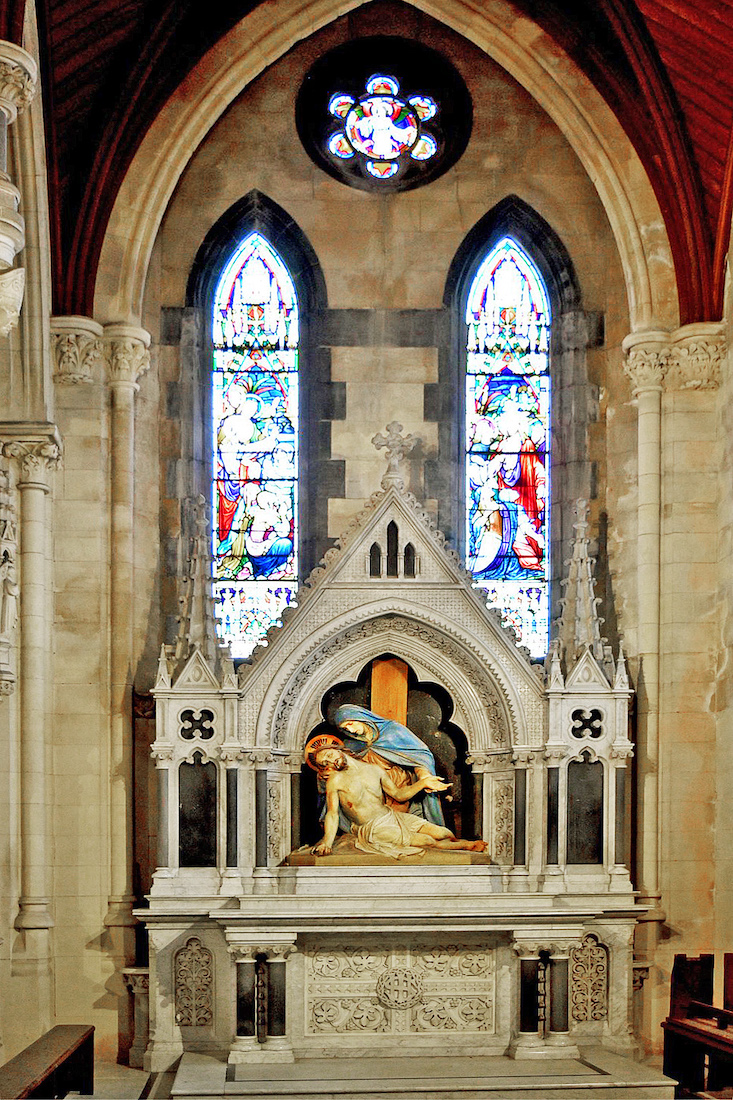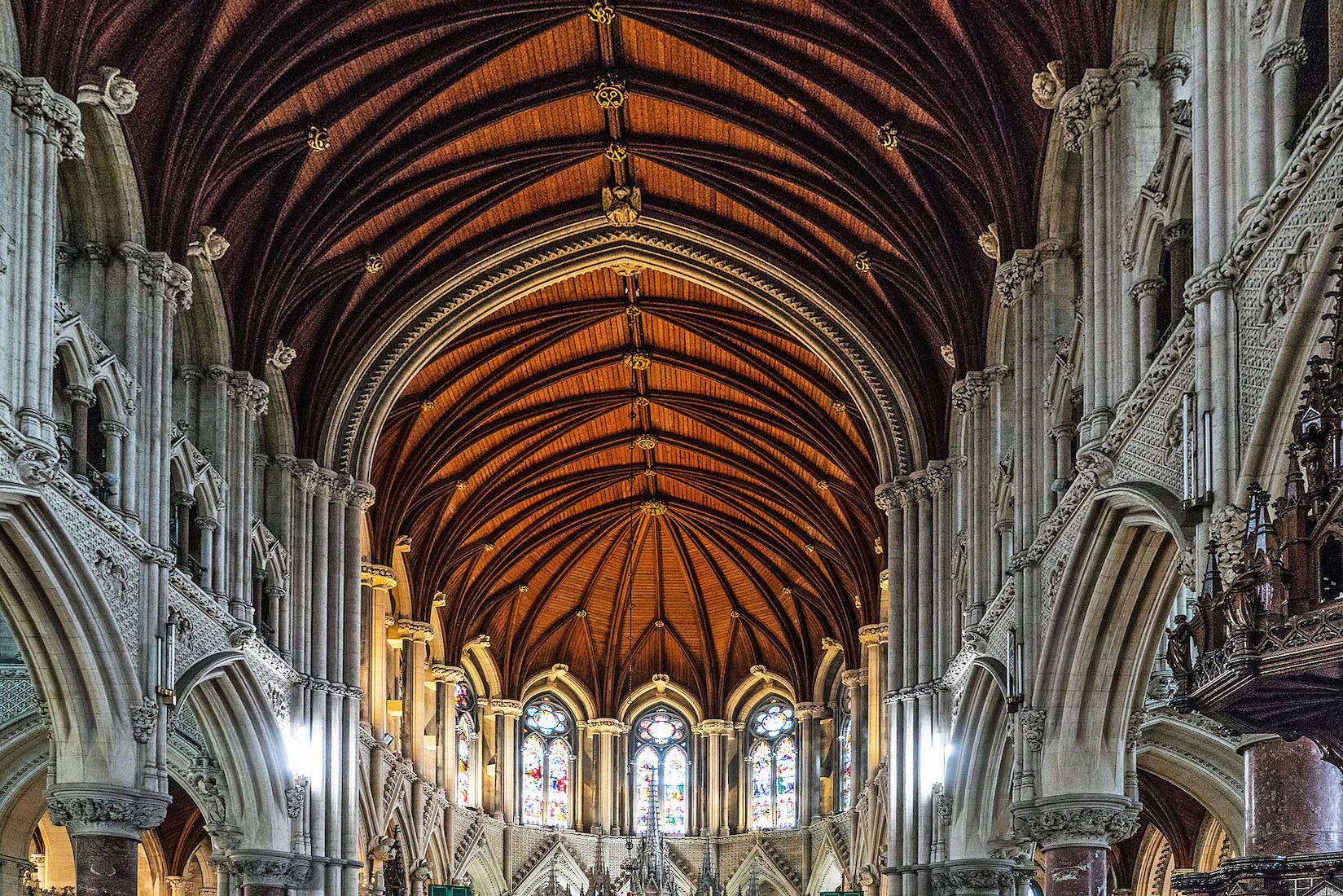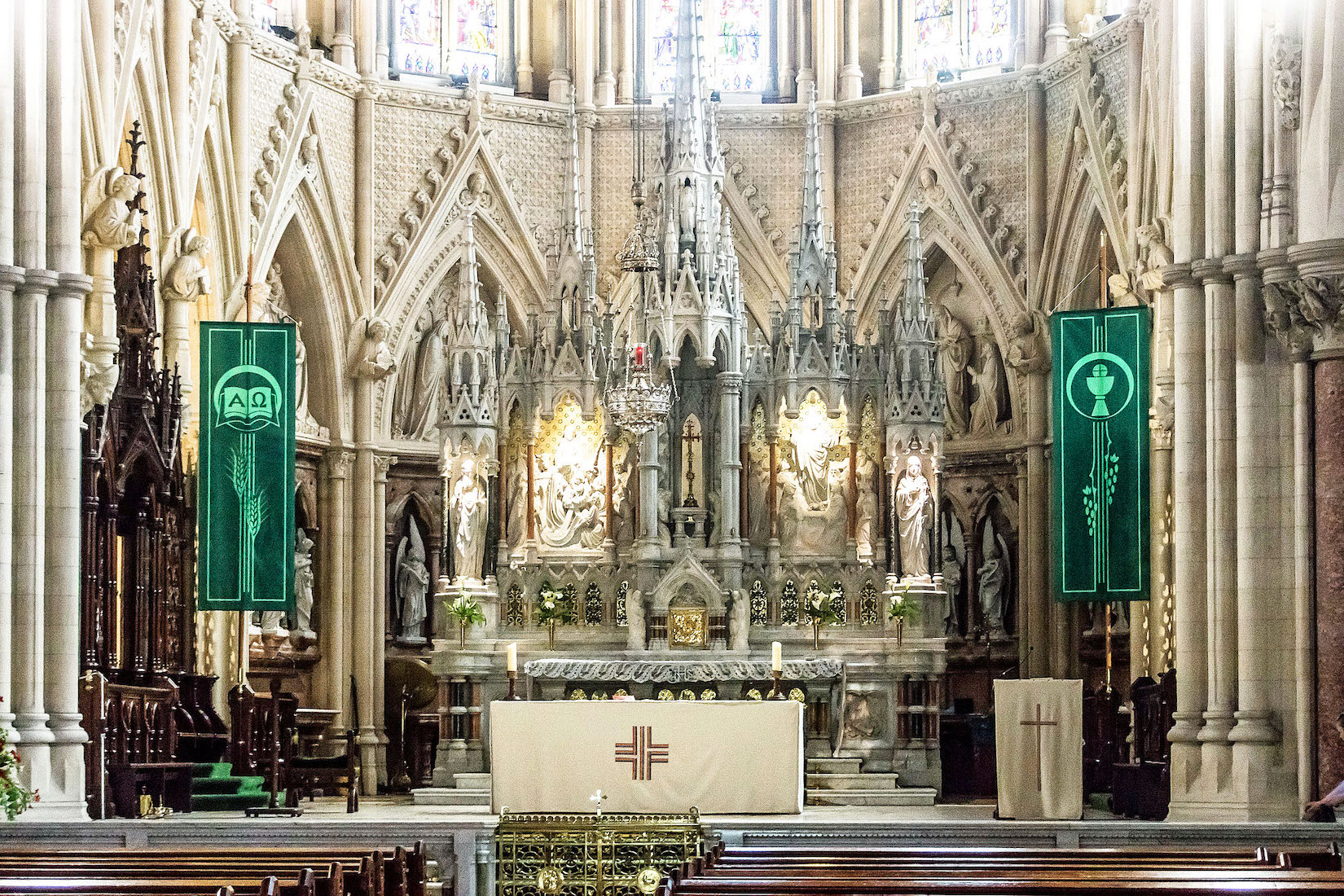

The Pietà Chapel opens up from the South transept: closest to the South wall of the transept. The sculpture on the altar of Mary holding the body of Jesus is a variant of the original Pietà sculpture by Michelangelo. The Madonna della Pietà, ‘Our Lady of Piety’; 1498 –1499), otherwise known as Pietà, is a Carrara marble sculpture of Jesus and Mary at Mount Golgotha representing the ‘Sixth Sorrow’ of the Blessed Virgin Mary, now located in Saint Peter’s Basilica, Vatican City. It is a key work of Italian Renaissance sculpture and often taken as the start of the High Renaissance. The original Pietà has Mary cradling the body of Jesus on her lap. [Photo2 Credit: TA Rachel B] INDEX
62. SACRED HEART CHAPEL WM WM


Next to the Pietà Chapel, and running parallel to it is the Sacred Heart Chapel. This chapel has a small brass gate at its entry, and at the far end stands an altar and reredos in front of a stained glass window. The reredos has five panels. The central panel contains an image of Jesus pointing to his heart. On either side are two figures which appear to be angels. Roman Catholics view the heart of Jesus Christ as a symbol of ‘God’s boundless and passionate love for mankind’.
64. CHANCEL G-DPH
There is much to be seen here, although we can only view the various items from a distance. Immediately in front of us is the chancel gate. Above is the impressive apse ceiling, below which is a row of stained glass clerestory windows. There are screen walls to the sides, and at left the cathedra. Finally, at centre is the altar together with the reredos. [Photo Credit: Geograph David P Howard]
65. CHANCEL GATE TA
The golden gates to the sanctuary are spectacular with central emblems an angel at left, and the Agnus Dei at right. [Photo Credit: TA ITRT]
66. APSE VAULTING WM
The barrel ceiling of the nave continues past the sanctuary arch and then morphs neatly into the semicircular ceiling of the apse. More brass bosses are visible including a worshipping angel at the arch, and the crossed keys.
67. APSE CLERESTORY WINDOWS [WC]
There is a fine set of stained glass clerestory windows around the apse. Unfortunately good resolution photos of these windows appear to be unavailable: I suspect that public access is difficult here. [Photo Credit: WC Andreas F. Borchert]
68. CATHEDRA AND CHANCEL SCREENS ••• TA
The chancel / sanctuary is bounded on the sides by brown screens. At their bases are several carved wooden rows of seats, and at left is the cathedra – the bishop’s throne. The word ‘cathedra’ is Latin for seat or throne, and it is from this word that a cathedral gets its name. [Photo1 Credit: Screen shot from Video; Photo2 Credit: ITRT]
69. SANCTUARY LAMP TA
Above the sanctuary hangs the sanctuary lamp. This lamp burns continually before the tabernacle, not only as an ornament, but for the purpose of worship. The General Instruction of the Roman Missal of the Catholic Church, for instance, states (in 316): “In accordance with traditional custom, near the tabernacle a special lamp, fueled by oil or wax, should be kept alight to indicate and honor the presence of Christ.” The sanctuary lamp, also called a chancel lamp, is placed before the tabernacle or aumbry in Roman Catholic churches as a sign of Jesus’ presence within, and in Old Catholic and Anglican churches as a sign that the Blessed Sacrament is reserved or stored. [Photo Credit: TA ITRT]
70. ALTAR WM
The functions of the altar have remained the same in Christian churches down the centuries. During Mass, it serves as a table to hold a copy of the Bible and the consecrated bread and wine that are distributed to worshipers. One to three cloths cover the altar, and a cross and candles may be placed on or near it. It is overshadowed here by the reredos (or screen) behind it. Notice the cathedra revealed at left, and the small lectern at right, behind the cross.
71. REREDOS WM
The ornate marble reredos has a small central crucifix as its focus. Below it is the tabernacle in which the blessed Elements of the Eucharist are stored. To the sides are scenes of the Nativity and the Glorified Christ.

CONCLUSION [Flickr fhwrdh]
I hope you have enjoyed visiting St Colman’s Cathedral with me: a beautiful cathedral in a spectacular position. I have had great pleasure in creating the website, although as is often the case, in some ways it has been difficult. Some suitable photos have not been easy to find, and there are places where information is lacking. I would be very happy to receive any corrections, comments, or extra material which might be included on this site.
As mentioned earlier in the Index, none of the photos on this site are mine, but have been obtained from various sources. I am really grateful to all those who have, knowingly or unknowingly, contributed to this site. The main contributor is William Murphy WM, whose photos are in the public domain. On his Flickr site, the first of William’s many photos of Cobh Cathedral can be found here.
Almost all of the window photos come from the Wikimedia Commons site [WC] with link:
https://commons.wikimedia.org/wiki/Category:Stained-glass_windows_of_Cobh_Cathedral
Unfortunately this collection is incomplete, and this site would benefit from high resolution photos of the Eastern windows in particular.
As well, there are a large number of individual photos which have been drawn from the public domain selection in Wikimedia and Geograph. These have been individually acknowledged in the text.
A larger number of photos come from Trip Advisor [TA]: in each case the photographer’s name has been given. I am very conscious of copyright, but can see no way to ask each Trip Advisor photographer for permission. I hope you might be delighted to see your photos used to promote St Colman’s, but I have no wish to cause offence. If there is a problem, please contact me at the email address below. The Trip Advisor link for reviews of Cobh Cathedral is given here.
The text input has come from various sources, and is used with thanks. I also greatly appreciate the work of my wife Margaret who proof-reads the text of all my websites.
Site created 10 / 2024
Paul Scott











